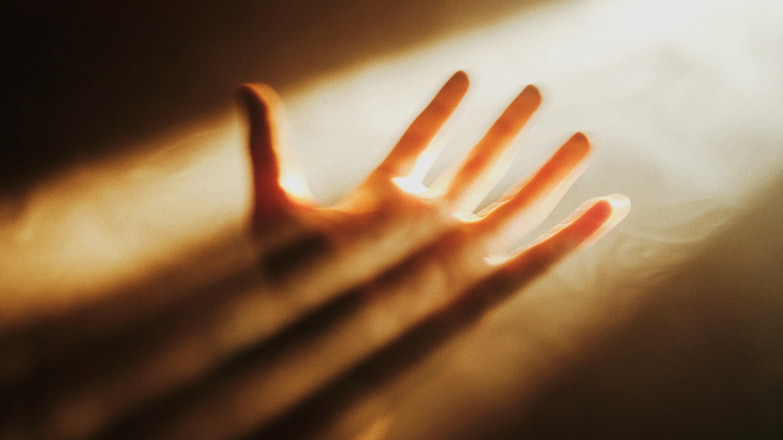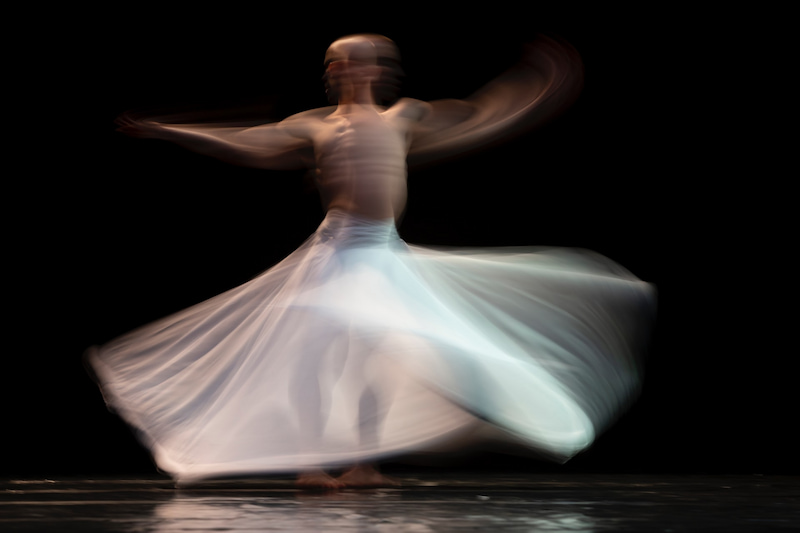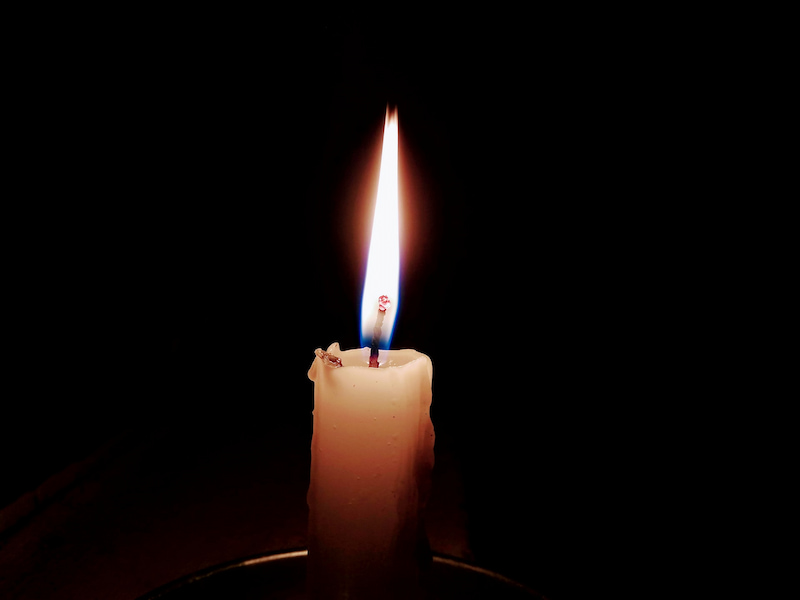
This is pretty good. Do note that a childhood of contemplation is mentioned here and it is surely part of the process. Then life intervenes and we all become young and frantic and take on the challenges of an adult.
I have experienced all of this and I do think that we learn repose to allow the other side to share what we need. In my case, meditation allowed the other side to show me the INNER SUN. It is very difficult to stare into even if the spectrum is narrower that our physical sun. Please understand i am describing a physical impossibility to produce using brain chemistry.
I am informed that i am on my eighth and final incarnation and likely through a total of 64 aspects including half male and half female. This will naturally subsume through eight lifetimes a total of 8 X 64 or 512 separate life experiences which is certainly substancial. I share this concept because it provides guidence to your own life. You could be anywhere along thiw path and it totals at least 800 calender years and many additional years in between often making up errors. This could take up another century in between to make it up to families you have damaged.
April 8th, 2022
By Aletheia Luna
Guest writer for Wake Up World
https://wakeup-world.com/2022/04/08/what-is-a-mystic-12-signs-youre-one/

By Aletheia Luna
Guest writer for Wake Up World
https://wakeup-world.com/2022/04/08/what-is-a-mystic-12-signs-youre-one/
There is a certain mysterious, holy, and incandescent flame that burns at the center of every religion, spiritual path, and philosophy … and that is mysticism.
From Buddhism and Hinduism to Christianity, Judaism, Islam, Taoism (and more), mysticism is the golden thread that connects all these religions together, despite how different each path’s dogmas may look on the surface.
For those who identify as ‘spiritual but not religious,’ mysticism is also at the heart of the spiritual journey for it is the very heart, lifeblood, and impulse we carry within to connect with the Divine.
Indeed, mysticism is at the very root of the spiritual awakening journey. Without mysticism, our lives feel dull, empty, directionless, and meaningless because there is no deeper impulse, no higher purpose.
However, when we awaken our inner mystic, we find joy, play, vibrancy, truth, love, peace, and freedom again. Connecting with our inner mystic and walking the mystical path, therefore is not just our basic human right, but our saving grace.
We’re living in a world now that is so divorced from mysticism – from the sacred, numinous, and holy – that we’re reaching record numbers of cases of what I call ‘Soul sickness’ or Soul Loss.
Soul Loss manifests as loneliness, depression, anxiety, paranoia, warmongering, chronic illnesses, violence of all kinds, and the desecration of our planet, our sacred Mother.
To reclaim your inner mystic is a radical act of love; one that is contrary to the savage consumerism, reductionistic scientism, and cold materialism that is running rampant in our world today.
To be a mystic in this day and age is to be a rebel: to side with love, not hatred; to honor peace, not war; to live from the Soul, not from the mind.
What is a Mystic?
A mystic is a person who seeks to awaken, glimpse, and reclaim the innate spiritual Oneness at the core of their being. In other words, a mystic is a spiritual seeker who is driven to surrender their ego orients their whole lives toward deeply integrating the primordial truth that they are an inseparable part of the Divine.
‘Mysticism,’ a word that became popular in the 18th century, stems from the Greek word must?s which refers to someone who has been ‘initiated into the mysteries.’ But mysticism itself has been around since the dawn of time.
Some of the more famous mystics throughout history include Lao Tze, Gurdjieff, Pythagoras, Guatama Buddha, Julian of Norwich, Jalal ad-Din Muhammad Rumi, St. Teresa of Avila, Ramana Maharishi, Dante, Saint John of the Cross, Ramana Maharishi, Anandamayi Ma, Jesus Christ, Carl Jung, and so many more.
There are numerous definitions of what a mystic is out there. But one that resonates strongly comes from author and translator of mystics, Mirabai Starr, who writes:
The way of the mystic is the way of surrender, of dying to the false self to be reborn as the true Self, the God Self, the radiant, divine being we actually are. It’s not that the old self—the personality, the ego, the stories we tell about our lives—is bad or wrong. It’s that when we recognise the essential emptiness of our individual identity in light of the glorious gift of our interconnectedness with the One, independence becomes much less compelling.
At some point in life, the majority of us are bound to have at least one mystical experience. Such tastes of Self-Realization or what the Buddhists call ‘satori,’ can be so vivid and so acute, that they change our lives forever.
But how can we know whether we’ve had one or not?
One place we can look is within the work of W. T. Stace, a philosopher of religion, who defined the seven characteristics of mystical experiences in the following way:
Unitary consciousness (i.e., the experience of Oneness)
Nonspatial, nontemporal awareness (i.e., timelessness and spacelessness)
Sense of reality and objectivity (i.e., there is an unquestionable ‘realness’ to the experience – it’s not a mere hallucination)
Blessedness and peace
Feelings of the holy, sacred, or divine
Paradoxicality (i.e., there is a realization of the Unity and interdependence of opposites, also known as non-dual awareness)
Ineffability (or the inability to put into words the experience; it is unfathomably paradigm-shifting)
W. N. Pahnke, a physician and psychiatrist, in his assessment of the above characteristics, added two more: (8) transiency and (9) subsequent life improvement. In other words, the mystical experience might be temporary, but it creates deep positive ripple effects in our lives.
If you’d like to find out whether you’ve had a mystical experience or not, see our article entitled 9 Signs You’ve Had a Mystical Experience.
So much has been shared about mysticism through the ages. But one theologian and author, Evelyn Underhill, managed to distill this wisdom into five stages of the mystical journey in her 1911 classic, “Mysticism: A Study in the Nature and Development of Spiritual Consciousness.”
Here are the stages that Underhill defined:
Awakening
Spiritual awakening can be understood as that sudden spark or dawning discovery that there’s more to life than meets the eye. In the awakening stage, we begin to ask deeper questions about life and go in search of answers. The result of this soul searching is that we must become lone wolves, distancing ourselves from our previous way of being and paving a totally new path for ourselves.
Purgation
Purgation is a stage that involves becoming aware of all our shadows and inner blockages that obscure the Light of Consciousness within us. This is a difficult stage because, after the initial excitement of awakening or enlightening spark of Self-awareness, we recognize in the words of Jack Kornfield, “after the ecstasy, the laundry.”
Inner work is demanded at this stage of the mystical journey, and its sole purpose is to “purge” or dissolve everything standing in our way of mystical Unity and Oneness.
And yet, as laborious as the Purgation or inner work process can be, it is required to find the ‘hidden Jewel’ that is always and forever inside of us.
In the words of various mystics and sages, Purgation is necessary because it helps us to realize the following:
… he and He become one entity. (Abulafia, Judaism)
The Kingdom of Heaven is within you. (Christianity)
Look within, you are the Buddha. (Buddhism)
Atman (individual consciousness) and Brahman (universal consciousness) are one. (Hinduism)
By understanding the Self all this universe is known. (The Upanishads)
He who knows himself knows his Lord. (Mohammed, Islam)
See: The Inner Work Journal Bundle for additional support through this stage.
Illumination
Once we have done a lot of deep work in the Purgation stage, we come to taste exhilarating moments of Illumination. For example, we might reach deep states of enlightened awareness within meditation, experience a sense of unification in nature, deep love for others and self, or even have a spontaneous moment of bliss.
However, the Illumination stage is short-lived and doesn’t mark a permanent shift in consciousness. The intense high of Illumination (also known as having an experience of ‘ego death‘) often leads to the intense low of the next stage:
Dark Night of the Soul
The Dark Night of the Soul can be best depicted by a picture: that of a desolate wasteland where everything feels lifeless, meaningless, and devoid of the Divine.
Fourteenth-century Italian poet, writer, and mystic Dante Alighieri described the Dark Night perfectly in his epic poem “Inferno: The Divine Comedy”:
Midway upon the journey of our life
I found myself within a forest dark,
For the straightforward pathway had been lost.
Ah me! how hard a thing it is to say
What was this forest savage, rough, and stern,
Which in the very thought renews the fear.
So bitter is it, death is little more;
But of the good to treat, which there I found,
Speak will I of the other things I saw there.
St. John of the Cross, who coined the word ‘Dark Night of the Soul’ back in the 16th century (in his work titled by the same name), described why this stage happens:
No matter how much individuals do through their own efforts, they cannot actively purify themselves enough to be disposed in the least degree for the divine union of the perfection of love. God must take over and purge them in that fire that is dark for them.
As painful and wretched as this stage may be, it is just that, a stage. And it leads to the final part of the mystical journey:
5. Union
After one has experienced the death and rebirth within the Dark Night of the Soul – which we can see as a necessary (but painful) initiation – the final stage embodies all that the mystic has ever longed for:
Divine Union.
Union is the shift in awareness, the expansion of consciousness, the attainment of Nirvana, Enlightenment, Unity, Non-Dual awareness, and the “Kingdom of Heaven” that is so often written about in mystical literature.
Within Union, the mystic is no longer trapped in the limitations of the small, illusory ego-self, but recognizes – directly and permanently – the “I Am” or the God Self that has forever and always been there, yet was simply veiled.
Unlike the Illumination stage, Union is a total transformation and liberation, not a temporary glimpse into the Divine.
12 Signs of the Modern Mystic

While the external appearance of mystics has changed through the ages (e.g., from robe-wearing monks and nuns to fez-wearing Middle Eastern poets), the same essence applies to all mystics, no matter what race, religion, or time period they’re from.
Here are twelve signs of the ‘modern mystic’ based on my own years of experience (and research):
You find it hard to fit in or belong in this world and crave to find some kind of “home”
You feel dissatisfied with your life (no matter how much material success you experience)
You feel aimless and lost, and yet feel called to create a meaningful change on this planet
You feel disillusioned by various religious, self-help, and spiritual paths (aka. many of these paths feel superficial and not “deep enough” for you)
You intensely crave a God/Divine-filled life
You’ve undergone a Spiritual Awakening, Kundalini Awakening, and/or Dark Night of the Soul
You feel everything intensely (as a highly sensitive person and/or empath)
You crave solitude and enjoy introspection
You’ve experienced spiritual crises of some sort (such as the quarter life crisis, existential crisis, Dark Night of the Soul, etc.)
Ever since childhood, you’ve been a deep thinking and contemplative person
You long to unite with something Greater than you and sense that the ego is a sham
You’ve had transitory glimpses of Oneness, Illumination, or ‘Enlightenment’
At the heart of the modern mystic, and all mystics really, is the burning desire to reconnect with the Soul and unite with Spirit. Whether this deep spiritual thirst is fulfilled through religion or some other path is beside the point. As the quote goes by Zen Buddhist monk Ikky?,
Many paths lead from the foot of the mountain, but at the peak, we all gaze at the single bright moon.
A Quick Word About Mysticism & Mental Illness
The psychotic drowns in the same waters in which the mystic swims with delight.
– Joseph Campbell
The above quote from writer and mythologist Joseph Campbell perfectly highlights the fine line between mysticism and mental illness.
There’s a reason why inner work as an initiatory process (such as the cultivation of self-love, mental harmony through meditation, and physical groundedness through yoga) is needed. Without creating internal space, it’s easy to go from neurotic to psychotic when faced with experiences too big for the ego to handle.
For someone prone to intense anxiety, depression, or other mental imbalances, the sudden experience of the vast primordial space of Oneness can be too much to handle. The result may be total shut down of the psyche, intense disorganization in thoughts and feelings, nihilistic bouts of existential crisis, and other issues.
Whether mental illnesses such as schizophrenia, bipolar disorder, borderline personality disorder, and so on, are actually spiritual illnesses, is an entire debate itself that would require a whole book (or more) to examine.
But what we do know is that there is such a thing as a ‘spiritual emergency’ where someone who hasn’t gone through the rigors of spiritual practice, is dropped into the deep end too fast and too soon. And the result is what mainstream society immediately dismisses as “mental illness.”
How to Practice Mysticism
Mysticism can be found in almost any religious or spiritual path. But how do we ‘practice’ it?
The simplest way to orient yourself to the mystical roots of whatever tradition or path you’re in is to focus on not just connecting with, but rediscovering yourself as the Divine.
Be mindful that seeing yourself as God is not the same as spiritual narcissism which is an inflation of the ego that confuses itself as untouchable, unquestionably wise, and so on.
Mystics walk the radical path of burning through the ego so they can be liberated from the illusion of the separate self and become One with their True Nature, which is Life itself. This isn’t a path for the faint of heart!
While many people these days enjoy calling themselves “mystics” because it looks good on social media, true mysticism is a relentless pursuit of truth. It is a commitment to “die before you die and realize there is no death,” in the words of Eckhart Tolle.
Here are some simple paths for practicing mysticism:
Spend a lot of time in nature – In nature, we can more easily rediscover our True Nature.
Make space for solitude and silence – The noise of everyday life has a way of drowning out the inner Voice, so commit to regular solitude and silence (if even for half an hour a day).
Contemplate the words of mystics – There is so much wisdom and truth to be gleaned from the life and experiences of the mystics, who knows what revelations their words may spark within you?
Cultivate the qualities of the heart – Your heart is a direct doorway to your Soul and the mysteries of the Divine. Focus on generating qualities of compassion, joy, generosity, forgiveness, gratitude, and love.
Less is more – Focusing on letting go and embracing simplicity helps you to become a ‘clear vessel’ in which the Light of Consciousness can shine through.
What other practices can you recommend?
Final Words
The eye through which I see God is the same eye through which God sees me; my eye and God’s eye are one eye, one seeing, one knowing, one love.
– Meister Eckhart
The above quote by medieval theologian and mystic Meister Eckhart perfectly summarizes all that it is to be a mystic: Oneness, deep knowing, and Love.
It was also Eckhart who said, “Theologians may quarrel, but the mystics of the world speak the same language.”
The fact that mysticism is so widespread (yet largely buried beneath rigid and fundamentalist dogma in our modern world) brings a sense of optimism, promise, and direction. By reconnecting with our thirst for mysticism – both within and without, individually and collectively – we can rediscover a sense of harmony, joy, and peace that dwells at the very Center of all.
The reality is that to be human is to have an inextinguishable craving for mysticism. No matter how secular we are, we all have an inner impulse to connect with something Greater than ourselves – whether that be outer space, a football team, a nation, or going back to our primal roots, the Divine/God.
In the end, no matter how alienated, flawed, or in despair we are, the mystical path of spiritual awakening shows us that we’re not separate deep down. While our minds and egos may believe that we’re an island floating on the ocean of life, the mystic comes to eventually realize that they are not just the ocean, but Life itself.
To end with a quote from mystical Persian poet, Hafez:
I wish I could show you,
when you are lonely
or in darkness,
the astonishing Light
of your own Being!
What is your experience with mysticism? What is a mystic to you? I’d love to hear your thoughts below.
About the author:
Aletheia Luna is an influential spiritual writer whose work has changed the lives of thousands of people worldwide. After escaping the religious sect she was raised in, Luna experienced a profound existential crisis that led to her spiritual awakening. As a psychospiritual counselor, tarot reader, and professional writer, Luna’s mission is to help others become conscious of their entrapment and find joy, empowerment, and liberation in any circumstance. See more of her work at lonerwolf.com.
This article, What is a Mystic?, was originally published on lonerwolf.com, reproduced with permission.




No comments:
Post a Comment